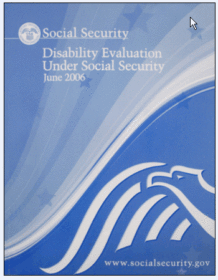Following on our story about financial resources for Lyme patients, we received this submission from Eric Minghella, an Outreach Coordinator for the Disability Benefits Help Center, offering to help clarify the process of applying for coverage.
“I came across the Bay Area Lyme Foundation this morning and I was so impressed by the work you do for people who have been affected by Lyme Disease. The resources and awareness you provide for families in need are so valuable and very much needed. I was wondering if I could contribute to the Bay Area Lyme Foundation by writing an article on applying for Social Security benefits with Lyme Disease. I work for Disability benefits help and I know that the process can be very confusing.”
As many know, treatment for and recovery from Lyme disease can be a long and costly process for those who suffer chronic symptoms. Applying for financial support can be a perplexing and tiresome endeavor, however, there are resources to assist you and you may find answers here.

Applying for Coverage
If you or a loved one has been diagnosed with Lyme disease, you may find that you’re unable to work due to the chronic disease’s complications. If you know that you’ll be too ill to be in the office for twelve months or more, you may qualify for Social Security disability benefits. These resources provided by the Social Security Administration (SSA) were designed to help Americans stay afloat financially while battling disease, illness, or injury.
Medically Qualifying with Lyme Disease
Every time the Social Security Administration [SSA] receives an application for disability benefits, it compares the submitted medical records to its own medical guide known as the Blue Book. The Blue Book lists hundreds of conditions that could qualify for disability benefits, as well as the symptoms and test results necessary to be approved.
Lyme disease is not listed in the Blue Book, but this does not mean that your claim will automatically be denied; you’ll need to prove that you “meet” another listing that is in the Blue Book. Some listings you find you might be able to meet include:
is not listed in the Blue Book, but this does not mean that your claim will automatically be denied; you’ll need to prove that you “meet” another listing that is in the Blue Book. Some listings you find you might be able to meet include:
For example, if your Lyme disease causes severe knee joint inflammation, you might qualify under Section 1.02 of the Blue Book. Under this listing, you’d need to prove that your knee pain is so severe, you cannot walk for more than a couple of blocks without the help of a stroller or wheelchair, or that you’re unable to step up more than a handful of stairs without the use of a railing. The Blue Book is available online, so you can always review the listings with your doctor to see if you may qualify.
Qualifying Without Meeting a Listing
If you find that you’re unable to meet a listing, but your Lyme disease symptoms and complications still keep you from working, you still might be able to qualify for disability benefits; that is done through what’s called a Medical Vocational Allowance. It’s the SSA’s way of saying that although you don’t meet their medical criteria, you’re still unable to do any work that you’re qualified for.
Older adults will have an easier time qualifying for a Medical Vocational Allowance, because they’re less likely to be retrained for an online or desk job. For example, a sixty-year-old construction worker with Lyme disease would have a much easier time qualifying than a recent college grad with similar symptoms. Construction jobs are very labor intensive, and a college grad could likely find a sedentary job that doesn’t cause any joint pain.
You can download an RFC online for your doctor to complete on your behalf.
Starting the Application Process
You can start the application process online, and you can even apply entirely online if you wish. If you’d rather speak with someone in person, you can schedule an appointment with your local SSA office by calling the SSA toll-free at 1-800-772-1213. There are more than 1300 field offices nationwide.
One important thing to keep in mind is that you must be disabled for at least 12 months to qualify for Social Security disability benefits. Because intensive medication helps many people recover Lyme disease, the SSA may not approve your claim unless you can prove that your prescribed treatments have not worked. If you have strong medical evidence on your side, you can expect to be approved in as little as five months.
More Information
- There is more information about how to apply for benefits here.
- You may also want to refer to this video instruction with helpful tips for completing your application.
- This questionnaire will help you assess your eligibility (before you start your application)
- This form will help you calculate potential benefits.
- A directory of regional Social Security Administration offices can be found here.
- There is also an online forum moderated by the SSA for questions not covered elsewhere.
My symptoms of Lyme disease occurred in 2017, but was diagnosed in 2019. I had severe symptoms ranging from headache, fatigue, and a characteristic skin rash called erythema migrans, i had difficulty with my joints, heart, and my nervous system.. I was given medications which helped but only for a short burst of time, then I decided to try alternative measures and began on Lyme Formula treatment from a health care herbal centre, It has made a tremendous difference for me (Visit w w w . healthcareherbalcentre . com)